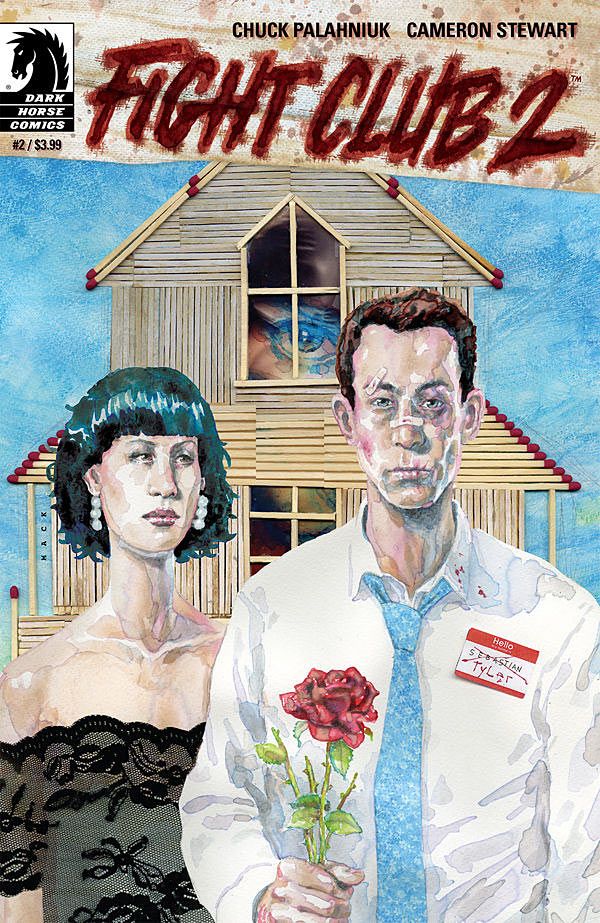The sequel to Chuck Palahniuk's "Fight Club" novel continues in "Fight Club 2" #2, fittingly written by Palahniuk, faithfully drawn by Cameron Stewart and colored by Dave Stewart. Many readers will more likely recall the 1999 David Fincher film adapted from the novel starring Ed Norton and Brad Pitt, but Palahniuk's follow-up is officially a continuation of the book. However, fans of either or both will find this to be of little consequence, as they get to see the expansion of the ideas put forth by the author continued by him, and a vision as dark and complex as Palahniuk's should rightfully be revisited by no one else.
The worst that can be said for this comic, in fact, is that he revisits some of his ideas a little too redundantly. This new story takes place a decade after the novel, and many of the repeated story devices here were ones that were already moved past in the original. Marla is back playing the role of a poser in support groups, for example; this was an element that was critical in the original story, but it's also merely a progressive step towards the farther reach of Palahniuk's idea. While it's a bit regressive, it's admittedly not terribly out of place, as a plausible reason is established for her presence in these groups. In fact, Palahniuk furthers the idea by making her involvement part of a more two-way relationship between her and its true members. Old ideas are reused, yes, but at least Palahniuk expands upon them.
When "Sebastian" and Marla's house went up in flames last issue, in fact, readers might have thought this was an unimaginative reuse of the fate his old condo met in the first "Fight Club"; however, Palahniuk not only dispels any such comparisons, but also provides a well-developed reason as to why these dwellings repeatedly meet such fiery fates. It even provides a new context through which to examine parts of the first story, something Palahniuk did so effectively within the framework of that original novel (and film) that it made re-reading and re-viewing a completely different experience. This was what made his first story such a brilliantly executed effort, and he demonstrates that same kind of brilliance here.
Cameron Stewart certainly "gets" Palahniuk's vision and executes it almost perfectly. The story recap on the inside front cover is not only a deceptively simple recap of the story so far, but also one told in a hilariously dry parody of an aircraft evacuation flyer. Glimpses of these were seen in the film, and Stewart convincingly brings this gag to life here.
Throughout the issue, Stewart shies away from the likenesses of the film's actors, but his capture of a balding, thicker-jowled Sebastian is perfectly convincing without betraying the younger look provided by Ed Norton in the movie. Dave Stewart plays along with the colors; the world of "Fight Club" is far from a bright and optimistic place, and his subdued palette evokes this, save for the fires; those, like in the movie, are quite colorful indeed. David Mack's cover is an umpteenth interpretation of "American Gothic" but is also a brilliantly telling and symbolic image.
Perhaps the strongest aspect of Palahniuk's story is his exploration of Sebastian's background, particularly his childhood, which provides an earlier peek at an individual whose unhappiness started long before his obsession with consumerism and his former ethically-challenging occupation. There's a new and previously unrevealed family connection that begins to come into play this issue, deepening the story behind the man who became Tyler Durden -- or perhaps already was Tyler Durden all along.
Despite some recycling of story ideas and a blatant reuse of the iconic "I want you to hit me as hard as you can" line, Palahniuk, Stewart and Stewart compile a strong and fascinating chapter to this "Fight Club" sequel. It's a sequel that few would have thought achievable after the conclusion to Palahniuk's original story, but the writer has found new elements to explore that few had even realized existed.

